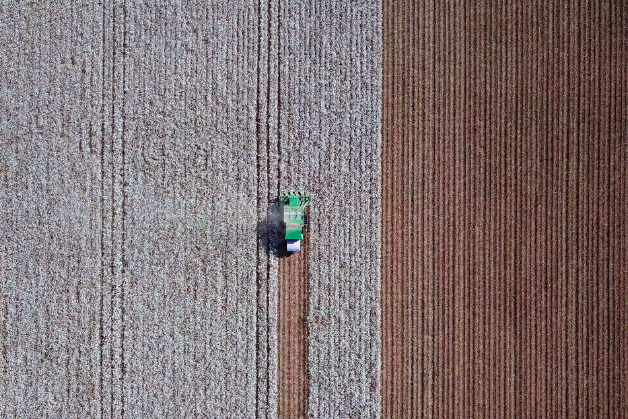Cotton is as old as civilization itself, grown in many regions all over the world for thousands of years. Today, cotton is grown to support a variety of durable and disposable products. When we think of cotton, many of us can close our eyes and think of our favorite 100 percent cotton t-shirt or our most comfortable pair of jeans, both of which are very durable and sometimes last us a lifetime. Others may think of some of their personal care and hygiene products like cotton swabs, cotton balls, tampons, baby diapers, all of which are used frequently on sensitive body parts and then disposed of.
The Barnhardt family has been purifying cotton for personal care product applications for decades, and our commitment to delivering safe and sustainable cotton-containing products begins right where it should—on the farm. When we envision cotton, we embrace all aspects of the cotton supply chain—from farming to ginning, through purification, then the converting and manufacturing of a wide variety of end-use products.
A Supply Chain Built for Quality and Sustainability
Over the last several years, we have developed personal relationships with multi-generational farmers committed to growing responsibly and supplying a quality product, day in and day out. These farmers, men and women alike, take pride in knowing that the cotton they grow will eventually be used in the products that they use in their own homes. Whether it’s a cotton-containing diaper, beauty or baby wipe, or a feminine hygiene product, it was born on the farm.
Sustainable farming practices are utilized by farmers for each crop to help conserve energy and preserve soil and water. Their craft is highly sophisticated, and together with the latest in technology, they supply high quality cotton while continuing to strengthen, improve and preserve cotton’s environmental footprint.
Barnhardt, along with our farming partners, is a member of Cotton LEADS℠, a program jointly initiated by the Australian and United States cotton industries. Members of Cotton LEADS℠ are dedicated to providing the investments, practices and infrastructures necessary to put cotton production on the path to continual-and sustainable-improvement. To learn more and obtain the real facts about the sustainability and carbon footprint of growing cotton, please visit www.cottonleads.org.
Sustainable Farming Methods
Currently, cotton is produced in over 100 countries around the globe by a variety of farming methods. Large producers in advanced markets like the United States use genetically-modified seed and precision farming techniques to meet goals for yield, quality, conservation, and long-term sustainability. A growing number of smaller farms in a handful of countries, including the US, have embraced organic farming, where the presence of artificial fertilizers, herbicides, and pesticides have been replaced by natural fertilizers (cow manure, chicken litter), biological pest control, and techniques like crop rotation and isolation.
Whether they farm conventionally or organically, cotton farmers are making considerable advancements in sustainability. In traditional cotton farming, producers are able to achieve higher yields with fewer acres farmed while at the same time reducing the amount of chemicals used due to hardier plant development through genetic modification and reductions in water usage. Today’s producers are masters at implementing precision agriculture, leveraging soil agronomy data, GPS location technology, and advanced farming equipment for targeted application of fertilizers, herbicides, and pesticides.
Organic farms, free of “bottle chemicals,” still have some commonalities with their conventional counterparts. Specifically, both types of cotton producers are seeking to optimize yield, preserve soil quality, and prevent environmental degradation.
In part two of this series, we’ll visit the gin, the next step along the supply chain that brings value to cotton’s journey from the farm to the global marketplace.
